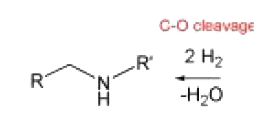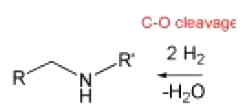Explain the following :
(a) Skin functions as an accessory organ.
(b) Mammals can eliminate hypotonic and hypertonic urine according to body needs.
(c) Micturitionis a reflex process, but is under some voluntary control.
(d) Mammals are ureotelic, but birds are uricotelic.
Step by step video & image solution for Explain the following : (a) Skin functions as an accessory organ. (b) Mammals can eliminate hypotonic and hypertonic urine according to body needs. (c) Micturitionis a reflex process, but is under some voluntary control. (d) Mammals are ureotelic, but birds are uricotelic. by Biology experts to help you in doubts & scoring excellent marks in Class 11 exams.
Updated on:21/07/2023Topper's Solved these Questions
- EXCRETORY PRODUCTS AND THEIR ELIMINATIONBOOK - PRADEEPCHAPTER - EXCRETORY PRODUCTS AND THEIR ELIMINATIONEXERCISE - ANALYTICAL QUESTION WITH ANSWERS
20 Videos
- EXCRETORY PRODUCTS AND THEIR ELIMINATIONBOOK - PRADEEPCHAPTER - EXCRETORY PRODUCTS AND THEIR ELIMINATIONEXERCISE - Practicle Questions (I. Multiple Choice Questions)
76 Videos
- EXCRETORY PRODUCTS AND THEIR ELIMINATIONBOOK - PRADEEPCHAPTER - EXCRETORY PRODUCTS AND THEIR ELIMINATIONEXERCISE - Additional Questions (SHORT ANSWER QUESTIONS)
31 Videos
- ECOSYSTEMBOOK - PRADEEPCHAPTER - ECOSYSTEMEXERCISE - Assertion and reasoning
16 Videos
- HUMAN REPRODUCTION BOOK - PRADEEPCHAPTER - HUMAN REPRODUCTION EXERCISE - NOTABLE QUESTION
3 Videos
Similar Questions
Knowledge Check
Read the passage given below and answer the following questions:
Reduction of carboxylic acids and their derivatives plays an important role in organic synthesis, in both laboratory and industrial processes. Traditionally, the reduction is performed using stochiometric amounts of hydride reagents, generating stochiometric amounts of waste. A much more attractive, atom-economical approach is a catalytic reaction using H2, however, hydrogenation of carboxylic acid derivatives under mild conditions is a very challenging task, with amides presenting the highest challenge among all classes of carbonyl compounds. Very few examples of the important hydrogenation of amides to amines, in which the C-O bond is cleaved with the liberation of water (Scheme 1), were reported. C-O cleavage of amides can also be affected with silanes as reducing agents.

We have now prepared the new, dearomatized, bipyridine-based pincer complex 3, catalyst 3(Here refered as Cat. 3). Remarkably, it efficiently catalyzes the selective hydrogenation of amides to form amines and alcohols (eq 1). The reaction proceeds under mild pressure and neutral conditions, with no additives being required. Since the reaction proceeds well under anhydrous conditions, hydrolytic cleavage of the amide is not involved in this process.

(Balaraman, E., Gnanaprakasam, B., Shimon, L. J., & Milstein, D. (2010). Direct hydrogenation of amides to alcohols and amines under mild conditions. Journal of the American Chemical Society, 132(47), 16756-16758.)
In the following questions, a statement of assertion followed by a statement of reason is given. Choose the correct answer out of the following choices on the basis of the above passage.
Assertion: Aniline can be prepared from suitable amide using catalyst 3
Reason: The use of catalyst 3 is limited to aliphatic amides only.AAssertion and reason both are correct statements and reason is correct explanation for assertion.BAssertion and reason both are correct statements but reason is not correct explanation for assertion.CAssertion is correct statement but reason is wrong statement.DAssertion is wrong statement but reason is correct statement.Read the passage given below and answer the following questions:
Reduction of carboxylic acids and their derivatives plays an important role in organic synthesis, in both laboratory and industrial processes. Traditionally, the reduction is performed using stochiometric amounts of hydride reagents, generating stochiometric amounts of waste. A much more attractive, atom-economical approach is a catalytic reaction using H2, however, hydrogenation of carboxylic acid derivatives under mild conditions is a very challenging task, with amides presenting the highest challenge among all classes of carbonyl compounds. Very few examples of the important hydrogenation of amides to amines, in which the C-O bond is cleaved with the liberation of water (Scheme 1), were reported. C-O cleavage of amides can also be affected with silanes as reducing agents.

We have now prepared the new, dearomatized, bipyridine-based pincer complex 3, catalyst 3(Here refered as Cat. 3). Remarkably, it efficiently catalyzes the selective hydrogenation of amides to form amines and alcohols (eq 1). The reaction proceeds under mild pressure and neutral conditions, with no additives being required. Since the reaction proceeds well under anhydrous conditions, hydrolytic cleavage of the amide is not involved in this process.

(Balaraman, E., Gnanaprakasam, B., Shimon, L. J., & Milstein, D. (2010). Direct hydrogenation of amides to alcohols and amines under mild conditions. Journal of the American Chemical Society, 132(47), 16756-16758.)
In the following questions, a statement of assertion followed by a statement of reason is given. Choose the correct answer out of the following choices on the basis of the above passage.
Assertion: N-methyl ethanamide on reaction with catalyst 3 will yield ethanol and methanamine.
Reason: Use of Catalyst 3 brings about cleavage of C-N bond of amidesAAssertion and reason both are correct statements and reason is correct explanation for assertion.BAssertion and reason both are correct statements but reason is not correct explanation for assertion.CAssertion is correct statement but reason is wrong statement.DAssertion is wrong statement but reason is correct statement.Read the passage given below and answer the following questions:
Reduction of carboxylic acids and their derivatives plays an important role in organic synthesis, in both laboratory and industrial processes. Traditionally, the reduction is performed using stochiometric amounts of hydride reagents, generating stochiometric amounts of waste. A much more attractive, atom-economical approach is a catalytic reaction using H2, however, hydrogenation of carboxylic acid derivatives under mild conditions is a very challenging task, with amides presenting the highest challenge among all classes of carbonyl compounds. Very few examples of the important hydrogenation of amides to amines, in which the C-O bond is cleaved with the liberation of water (Scheme 1), were reported. C-O cleavage of amides can also be affected with silanes as reducing agents.

We have now prepared the new, dearomatized, bipyridine-based pincer complex 3, catalyst 3(Here refered as Cat. 3). Remarkably, it efficiently catalyzes the selective hydrogenation of amides to form amines and alcohols (eq 1). The reaction proceeds under mild pressure and neutral conditions, with no additives being required. Since the reaction proceeds well under anhydrous conditions, hydrolytic cleavage of the amide is not involved in this process.

(Balaraman, E., Gnanaprakasam, B., Shimon, L. J., & Milstein, D. (2010). Direct hydrogenation of amides to alcohols and amines under mild conditions. Journal of the American Chemical Society, 132(47), 16756-16758.)
In the following questions, a statement of assertion followed by a statement of reason is given. Choose the correct answer out of the following choices on the basis of the above passage.
Assertion: Use of hydride catalyst or hydrogen brings about cleavage of C-O bond in amides.
Reason: Hydride catalyst or hydrogen cause to reduction of amides.AAssertion and reason both are correct statements and reason is correct explanation for assertion.BAssertion and reason both are correct statements but reason is not correct explanation for assertion.CAssertion is correct statement but reason is wrong statement.DAssertion is wrong statement but reason is correct statement.
Indicate whether the following statements are true or false:
(a) Micturition is carried by a reflex.
(b) ADH helps in water elimination, making the urine hypotonic.
(c) Protein-free fluid is filtered from blood into the Bowman's capsule.
(d) Henle's loop plays an important role in concentrating the urine.
(e) Glucose is actively reabsorbed in the proximal convoluted tubule.
View SolutionIndicate whether the following statements are true of false :
(a) Micturition is carried out by a reflex.
(b) ADH helps in water elimination, making the urine hypotonic.
(c) Protein-free fluid is filtered from blood plasma into the Bowman's capsule.
(d) Henle's loop plays an important role in concentrating the urine.
(e) Glucose is actively reabsorbed in the proximal convoluted tubule.
View SolutionIndicate whether the following statements are true of false :
(a) Micturition is carried out by a reflex.
(b) ADH helps in water elimination making the urine hypotonic.
(c) Protein-free fluid is filtered from blood plasma into the Bowman's capsule.
(d) Genle's loop plays an important role in concentrating the urine.
(e) Glucose is actively reabsorbed in the proximal convoluted tubule.
View SolutionName the process and the organ which helps in removing the following wastes from the body.
(a) Carbondioxide
(b) Undigested food
(c ) Urine
(d) Sweat.
View SolutionRead the passage given below and answer the following questions:
Reduction of carboxylic acids and their derivatives plays an important role in organic synthesis, in both laboratory and industrial processes. Traditionally, the reduction is performed using stochiometric amounts of hydride reagents, generating stochiometric amounts of waste. A much more attractive, atom-economical approach is a catalytic reaction using H2, however, hydrogenation of carboxylic acid derivatives under mild conditions is a very challenging task, with amides presenting the highest challenge among all classes of carbonyl compounds. Very few examples of the important hydrogenation of amides to amines, in which the C-O bond is cleaved with the liberation of water (Scheme 1), were reported. C-O cleavage of amides can also be affected with silanes as reducing agents.

We have now prepared the new, dearomatized, bipyridine-based pincer complex 3, catalyst 3(Here refered as Cat. 3). Remarkably, it efficiently catalyzes the selective hydrogenation of amides to form amines and alcohols (eq 1). The reaction proceeds under mild pressure and neutral conditions, with no additives being required. Since the reaction proceeds well under anhydrous conditions, hydrolytic cleavage of the amide is not involved in this process.

(Balaraman, E., Gnanaprakasam, B., Shimon, L. J., & Milstein, D. (2010). Direct hydrogenation of amides to alcohols and amines under mild conditions. Journal of the American Chemical Society, 132(47), 16756-16758.)
In the following questions, a statement of assertion followed by a statement of reason is given. Choose the correct answer out of the following choices on the basis of the above passage.
Assertion: The use of catalyst 3 is an efficient method of preparation of primary amines
Reason: Use of catalyst 3 is a step down reaction.
View Solution
